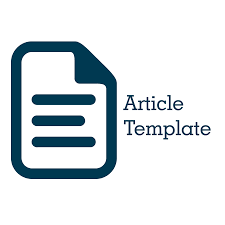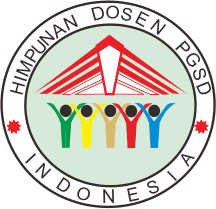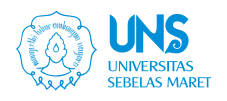Profil pengembangan literasi budaya dalam pembelajaran ilmu pengetahuan alam dan sosial (IPAS) di kelas V sekolah dasar
Abstract
This study aims to describe the cultural literacy development profile of the cultural literacy development profile in science science learning in grade 5 SD N 2 Drono in 2023/2024. This study uses a qualitative method with a phenomenological approach. The subjects in this study are class teachers and 7 students of grade V of SD Negeri Drono 2 Klaten. The research data was obtained through observation techniques, interviews and document studies. To test the validity of the data, this study uses source triangulation and time triangulation. The researcher used an interactive model data analysis technique developed by Miles and Huberman. The teacher has integrated cross-cultural awareness into the planning, implementation, and evaluation of IPAS lessons. Various media, learning resources, and teaching methods are used to help students understand cultural differences. The research indicates that the teacher has fostered an inclusive environment that embraces cultural diversity. The teaching modules have comprehensively developed cross-cultural awareness. IPAS learning activities have enhanced cultural literacy, particularly in cross-cultural awareness. The teacher also evaluates IPAS learning by incorporating cross-cultural aspects. This promotes students' understanding and appreciation of local and diverse cultures, which is essential for effective interaction in heterogeneous communities.
Keywords
Full Text:
PDFReferences
N. Anisah Ristiana and P. Rintayati, “Penerapan model pembelajaran berbasis proyek (project-based learning) untuk meningkatkan keterampilan berpikir kreatif pada pembelajaran IPAS di Sekolah Dasar,” Jurnal Didaktika Dwija Indria, vol. 12, no. 2, pp. 73–80, 2024. [2] I. Azzahra, Aan Nurhasanah, and Eli Hermawati, “Implementasi Kurikulum Merdeka Pada Pembelajaran IPAS di SDN 4 Purwawinangun,” Didaktik : Jurnal Ilmiah PGSD STKIP Subang, vol. 9, no. 2, pp. 6230–6238, 2023, doi: 10.36989/didaktik.v9i2.1270. [3] W. N. Listia, “Anak Sebagai Makhluk Sosial,” jurnal unimed, vol. 1, no. Juni, pp. 2301–9409, 2015, [Online]. Available: http://idhamputra.wordpress.com/ [4] Koentjaraningrat, Kebudayaan, Mentalitas dan Pembangunan. Jakarta: Gramedia Pustaka Utama, 2004. [5] N. Ryan Saputra, F. Adi Purnama, and Karsono, “Analisis keterampilan sosial dalam dimensi hubungan teman sebaya pada buku ajar IPAS SD Kelas IV,” Jurnal Didaktika Dwija Indria, vol. 11, no. 6, pp. 55–60, 2023. [6] Kementrian Pendidikan dan Kebudayaan, “Materi Pendukung Literasi Budaya dan Kewargaan,” 2017. [7] F. Aisara and A. Widodo, “Melestarikan kembali Budaya Lokal melalui Kegiatan Ekstrakulikuler untuk Anak Usia Sekolah Dasar,” Cakrawala , 2021. [8] Sugiyono, “Metode Penelitian Pendidikan Pendekatan Kuantitatif, Kualitatif, Dan R&D,” Alfabeta, 2018. [9] Moleong, “Metode Penelitian Kualitatif,” PT. Remaja Rosdakarya, 2017. [10] Fatchan, “Metode Penelitian Kualitatif: 10 Langkah Penelitian Kualitatif Pendekatan Konstruksi dan Fenomenologi,” UM Press, 2013. [11] K. Polistina, “Cultural literacy.,” The handbook of sustainability literacy., 2009. [12] D. Ratnasari, “the Importance of Cross-Cultural Understanding in Foreign Language Teaching in the Asian Context,” Bahasa dan Seni: Jurnal Bahasa, Sastra, Seni, dan Pengajarannya, vol. 46, no. 2, pp. 124–131, 2019, doi: 10.17977/um015v46i22018p124. [13] Kemendikbud, “PERMENDIKBUDRISTEK NOMOR 5 TAHUN 2022,” Jakarta, 2022. [14] Muh. Kharis, “Media Pembelajaran Berbasis Multikultural,” Ta’allum: Jurnal Pendidikan Islam, vol. 2, no. 1, 2014, doi: 10.21274/taalum.2014.2.1.63-71. [15] E. Andini, “Cendikia pendidikan,” Cendekia Pendidikan, vol. 3, no. 6, pp. 101–112, 2024. [16] Koentjaraningrat, “KEBUDAYAAN, MENTALITAS DAN PEMBANGUNAN,” 2004. [17] Rizkana, “PENINGKATAN PEMBELAJARAN PELESTARIAN ALAM MELALUI METODE FIELD TRIP SISWA KELAS 3 SEKOLAH DASAR KALIGAYAM 02 KABUPATEN TEGAL,” 2012. [18] M. Nur and K. Timur, “Pendekatan Pembelajaran Ips Berbasis Museum,” EDUCATIONAL JOURNAL: General and Specific …, vol. 2, no. 1, pp. 168–184, 2022.
Refbacks
- There are currently no refbacks.



